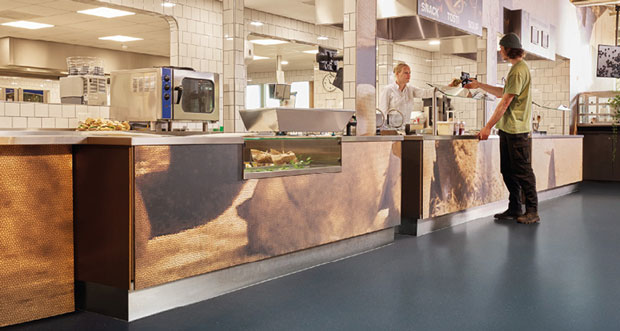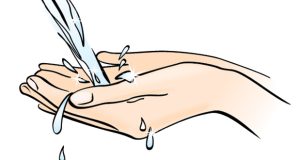Safety flooring can be a vital part of any interior design scheme. However, who said that this means you have to be conservative with design? Craig Thornhill, Technical Services Manager from Forbo Flooring Systems explains how safety can be easily combined with aesthetics
Safety flooring is a key specification consideration for a wide variety of buildings and interior design schemes. Helping to keep occupants safe and preventing slips and falls, safety flooring plays an important role within a wider flooring scheme. Traditionally, incorporating these safety benefits has often led to facilities managers being forced to compromise on design. However, with modern digital printing techniques and the progression in safety flooring manufacturing, this is no longer the case, allowing for more high-end, contemporary designs and the creation of safe spaces that are both inspiring and inclusive.
SAFETY FIRST
Of course, safety flooring is first and foremost a practical solution. The HSE reported that in 2022/23, 32 per cent of non-fatal workplace injuries were made up of slips, trips and falls on the same level. With an effective safety flooring solution, such accidents can be easily reduced, with good quality safety floor coverings offering increased underfoot friction, therefore reducing the likelihood of an injury due to a slip.
THE NUMBERS
With slip resistance in mind, there are various ratings for facilities managers to be aware of when looking for a true safety flooring solution. The first is the Pendulum Test Value (PTV), which simulates the bottom of a foot or shoe passing over a surface with and without contaminants on it. A PTV of 36 or higher is classified as a low slip risk, making it ideal for most general and specialist use spaces.
There is also the ‘Ramp Test’, or R rating, which measures the ability of a surface to provide friction on a sloped plane. For this, there is a minimum rating of R9 and a maximum of R13, with R11 and above recommended for surfaces that are regularly expected to have a high risk of continuous contamination, such as those found within commercial kitchens or laundries. By ensuring floor coverings satisfy the functional needs of the specific area they are being installed in, you can ensure the end users’ safety is being catered for. It is recommended by many manufacturers to choose a safety flooring with both a PTV and R rating, ensuring that the product will perform across its entire service life.
FUNCTION AND DESIGN
Thanks to modern designs and advancements in technologies, this required functionality can now be combined with aesthetics. Some manufacturers are offering a wider variety of colourways and patterns to choose from within their safety flooring collections, such as Forbo’s Step safety vinyl. This range includes contemporary wood, concrete and stone aesthetics, as well as on-trend shades and tones that can be paired with other solutions from across their portfolio to create beautiful integrated flooring schemes.
In many ways, design is just as important a consideration as the function of your chosen solution. For example, in healthcare settings, design can have a measurable impact on post-operative recovery times and patient’s wellbeing. While in care home environments, residents may perceive certain patterns or colours as obstacles or hazards, causing them to avoid using certain pathways or become distressed. In this case, finding designs that are inclusive of this, or better yet certified by the University of Stirling’s Dementia Services Development Centre (DSDC), you can have a positive impact on someone’s experience of the space.
While facilities managers should always consider the slip resistance and functionality of a safety flooring solution, they no longer need to compromise on the design. With many manufacturers offering a wider range of colourways across a variety of applications and slip ratings, there are now more options than ever before to choose from.
Just look for modern safety flooring designed to create more sustainable and healthier indoor environments and has a clear focus on the safety, hygiene and wellbeing of every individual who uses the floor coverings.






